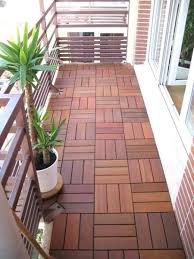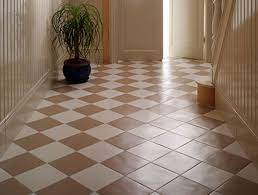

It is often assumed that issues such as cracking and lifting floor tiles are caused by the use of inexpensive floor tiles. However, this is not always the case, and the primary cause is related to the way the tiles were first put.
The following are some pointers on how not to tile on a hardwood or concrete floor.
- DO NOT tile on an uneven surface
- DO NOT tile on damp or wet concrete
- DO NOT use the inappropriate adhesive
- DO NOT tile on a filthy, dusty, oily, or greasy surface
- DO NOT tile directly on a moving floor surface, such as hardwood flooring
Analyze the Surface
Prior to tiling your floor, you should determine the surface on which the floor tiles will be set.
- Is the surface constructed of wood or concrete?
- Is the surface clean and dust-free?
- Is the surface in motion?
Creating a Tiled Surface on a Wooden Surface
Because the majority of hardwood floor tiles surfaces are movable, they must be secured before tiling can begin. The most effective method for doing this is to cover the wood surface with plywood. Plywood must be at least 15mm thick to meet British Standards.
Alternatively, you might utilize No More Ply boards, which are constructed of cement fiber. They outperform plywood boards, are BBA certified, and provide a 25-year warranty. They also do not elevate the floor level as much as plywood since they are just 6mm thick. Please visit the product page for further information on No More Ply.
Tiling a Concrete Floor
Ascertain that the concrete flooring is devoid of loose or damaged parts, that it is level, and that it is dry. A newly installed concrete floor requires at least six weeks to cure, whereas a screed or self-leveling solution applied to an existing concrete floor takes around three weeks to dry.

Appropriate Adhesive
On the back of each adhesive bag is useful information such as the mixing ratio, setting periods, coverage, and appropriateness for usage. Always certain that your floor tiles are completely covered with glue, since dotting and dabbing might create spaces that can cause problems later.learn more about repairing floor tiles at http://relateinternational.net/how-to-repair-your-terrazzo-floor-a-complete-diy-guide/
For hardwood floor surfaces that have been covered with plywood or No More Ply, use a cement-based flexible adhesive and grout to secure your tiles in place. This will compensate for any little movement that may occur over time.
Any quick setting cement-based adhesive appropriate for floor tiles will suffice for concrete floor surfaces. When installing underfloor heating, a flexible adhesive is required.
If you are tiling on a surface other than wood or concrete, we recommend consulting an expert before beginning your job.
What is the greatest sort of tile for a kitchen floor?
Porcelain floor tiles or natural stone tiles would be the ideal choice for a kitchen floor, depending on the usage of the area. Both of these alternatives are rugged and sturdy, allowing them to survive significant wear and tear over time.
However, if your kitchen sees a lot of activity on a daily basis, such as if you’re an active baker, if you allow your children assist with cooking, or if you’re a little bit clumsy, our kitchen floor tiles suggestion is to avoid real stone. Stone is porous, and if not sealed and handled correctly and on a consistent basis, it will discolor and hence mark with time.
Which kitchen floor is the simplest to keep clean?
Porcelain floor tiles are considerably simpler to clean than genuine stone tiles since there is less risk of ruining the sealant or leaving wet traces. The majority of porcelain is micro sealed throughout the manufacturing process, making it very resistant to wear and tear and needing minimal maintenance.
Given the room’s character, we recommend a mid-tone floor tile. This implies that although it will not show as much filth as a light tile, it will not reveal grease stains, hair, or dust as a dark floor tile would. Additionally, we recommend a deeper grout color to keep it appearing fresher for longer.
Wood-Looking Tiles
Wood effect tiles, which mimic the appearance of genuine wood flooring, are an excellent way to bring warmth to your kitchen. The printed knots and grain offer beauty and character to your room while also serving as a sturdy and functional surface.
Available in a variety of tones and formats, you may construct a variety of laying patterns to obtain the aesthetic you choose. Additionally, matching grout colors are available, allowing you to create a very realistic-looking wood floor that is scratch- and stain-resistant, ideal if you have dogs or children.
Tiles with a Concrete Effect
We discussed mid-toned flooring before, and a grey concrete impression is ideal for this. When done properly, it’s a very durable finish that works well in both modern and more classic settings. The concrete appearance tile is an excellent choice for individuals seeking a minimalist or Scandi-inspired finish; it may be warmed up with natural woods and warm metals such as polished brass or gold.
Tiles with Patterns
If you’re looking to up the ante, patterned floor tiles are a must-consider. The pattern adds brightness and individuality to the area, and with the correct design, it may work well with almost any interior plan. A patterned tile may also be really beneficial in terms of making a room seem larger if the pattern is chosen correctly, but it’s also excellent for defining a zone, which is particularly crucial in a more open plan living area. You may separate the kitchen and dining spaces by changing the tile pattern to a wood look, for example.
If you choose porcelain floor tiles, you may also determine if it is acceptable for outdoor usage, which allows you to expand your living area with bi-fold doors, learn more about bi-fold door by clicking here, really opening up your house and connecting your room to the outdoors. This not only increases your perception of space, but also links you to nature and so creates a sense of well-being, transforming your kitchen into a calm and cheerful area.